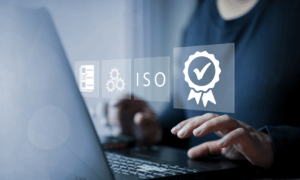Service organizations such as cloud providers and Software as a Service (SaaS) companies look to demonstrate they have effective internal controls and comply with security and privacy standards. To do so, they often pursue a Service Organization Control (SOC) audit and, most often, a SOC 2 report.
SOC 2 reports are a standardized way to validate security, privacy, and processing integrity. The next question considered is whether a SOC 1 audit may be beneficial (or required).
This decision depends on factors including the types of controls that will be examined and the end users of the report. Both SOC standards are established and maintained by the American Institute of Certified Public Accountants (AICPA), and a SOC examination is usually conducted by auditors working for an independent accounting firm.
Key Similarities Between SOC 1 and SOC 2
SOC 1 and SOC 2 reports look very similar and there is some overlap between the two, but there are fundamental differences between the reports and their audiences.
Both reports are valuable in assuring customers, prospective customers, regulators, and other stakeholders that the service organization can protect data and manage risk effectively. The SOC audit process also provides insight to help the service organization evaluate and enhance its security and data governance processes.
Providing a SOC 2 report is becoming a common contractual requirement, especially within the vendor qualification requirements of large enterprise customers. In some cases, the SOC 1 report will be an additional requirement that may show up for new customer opportunities, or the request for the SOC 1 will come from long term customers. These organizations want to ensure their data will be processed consistently and accurately, and increasingly rely on SOC 1 reports for that assurance.
The testing procedures for SOC 1 will focus on financial controls and transaction processing, while SOC 2 will examine general IT controls (ITGC) testing and validation. As most SOC 1 systems are built on information technology systems, many controls from a SOC 2 report can be mapped to a SOC 1 report.
Understanding SOC 1 and SOC 2
A SOC 1 examination centers on internal controls over financial reporting (ICFR) a service provider has in place to ensure transaction or data processing is done consistently and reliably. A SOC 1 report focuses on business processes specific to the service organization and there is more variability than in a SOC 2 report, because the control environment will be specific to each service organization.
A SOC 2 report examines controls that address the Trust Services Criteria (primarily security, but there are five criteria to choose from) and is relevant for service organizations entrusted with custody of their customers’ data. The Trust Services Criteria provide a pre-defined framework that can be applied to a wide range of service providers.
Trust Services Criteria for SOC 2
The relevant trust services criteria are:
- Security. The only required objective, this criterion evaluates the organization’s controls against unauthorized data disclosure, access, or manipulation.
- Availability. Keeping systems operational.
- Confidentiality. Protecting sensitive information throughout its lifecycle.
- Processing integrity. Ensuring systems operate without unexplained errors.
- Privacy. Protecting personal information related to customers, employees, and other stakeholders.
Our article “Choosing the Right Trust Services Criteria for Your SOC 2 Audit” provides more details on identifying relevant SOC 2 criteria.
Choosing a SOC 1 or SOC 2 Report
Selecting the most appropriate report depends on the intended audience and the factors leading you to consider a SOC audit. Does your organization touch customer’s financial data and reporting? Are customers asking about information security and data governance?
A SOC 1 report, with its focus on ICFR and the related IT controls, is best suited for evaluating the security of financial data and processing. The primary audience is the organization’s management, customers, and the organization’s external financial statement auditors.
A SOC 2 report, aligned with the trust services criteria listed above, has the same audience and adds potential customers and business partners evaluating the service organization as part of their vendor selection or due diligence process.
For more information and help determining whether a SOC 1 vs. SOC 2 audit report is best suited for your needs, get in touch with our team.
















